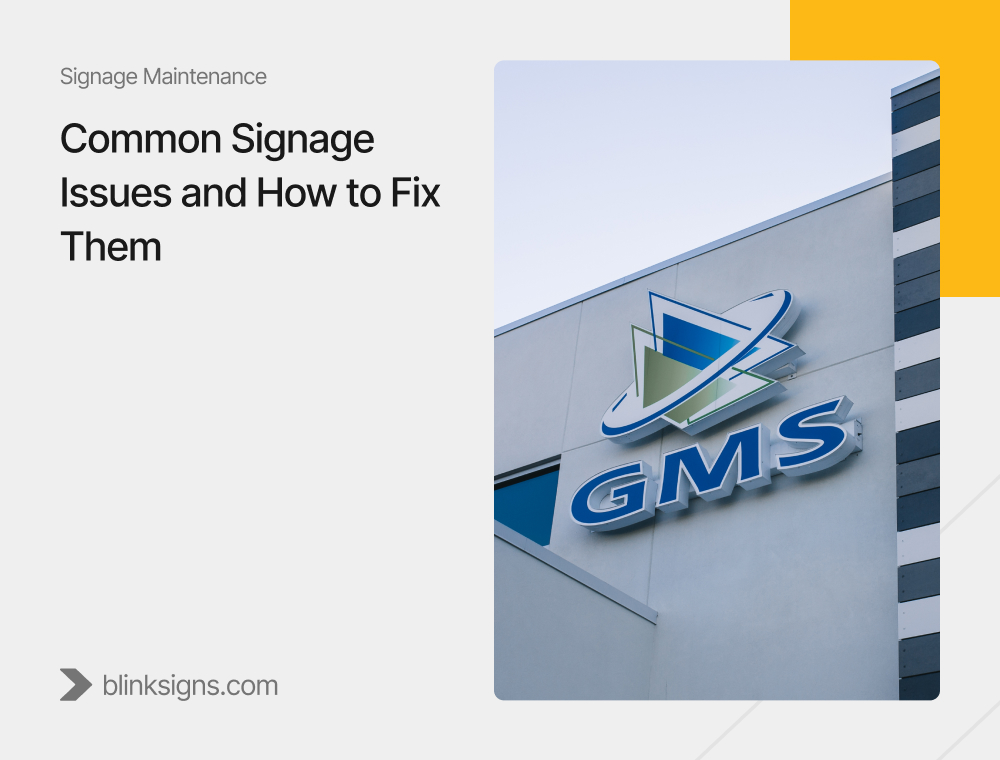
Common Signage Issues and How to Fix Them
Why Signage Maintenance Matters for Your Business
Your signage isn’t just a display—it’s a powerful branding tool that shapes how customers perceive your business. Whether it’s an illuminated storefront sign, wayfinding sign, or digital display, your signs work around the clock to attract customers, communicate information, and create a professional image. However, weather conditions, electrical failures, and material wear over time can compromise your signage’s visibility and effectiveness.
A faded, peeling, or flickering sign can make your business look neglected or outdated, potentially driving customers away. Worse, improperly maintained signage can lead to compliance issues, safety hazards, or complete sign failure. Regular maintenance ensures your signs stay vibrant, functional, and aligned with your brand identity.
At BlinkSigns, we help businesses maintain their signage with expert repairs, routine upkeep, and durable signage solutions. Whether fixing minor wear-and-tear, replacing outdated components, or full sign restoration, we ensure that your signage always delivers the right impression.
This guide breaks down the most common signage issues, how to fix them, and when to call the professionals to protect your investment.
Identifying Common Signage Issues Based on Type
Different types of signage face specific challenges depending on their materials, location, and exposure to elements. Recognizing early warning signs can help prevent minor problems from escalating into costly replacements.
1. Structural & Surface Issues

Structural & Surface Issues
Outdoor and indoor signs face unique structural risks that affect their readability and durability.
- Fading Colors & Sun Damage – Long-term UV exposure breaks down pigments, causing vinyl graphics, printed banners, and painted surfaces to fade or discolor.
- Peeling Vinyl Graphics & Lettering – Poor adhesive quality, heat exposure, and moisture can cause vinyl lettering and window graphics to bubble, lift, or crack.
- Scratches & Surface Damage – High-traffic areas often lead to scuff marks, scratches, and abrasions on metal, acrylic, and plastic signage.
- Rust and corrosion on Metal Signs—Humidity, rain, and pollution accelerate rust formation, leading to structural weakening and reduced visibility.
- Cracked or Broken Acrylic & Glass Panels – Impact damage, vandalism, or rapid temperature shifts can cause glass or acrylic signage to crack or shatter.
- Warping & Expansion Due to Temperature Changes – Wooden and plastic signs may expand, warp, or bend when exposed to extreme heat or cold.
- Graffiti and Vandalism Damage—Businesses in high-traffic urban areas often face defaced signage, which must be cleaned quickly to maintain a professional image.
2. Electrical & Illumination Issues
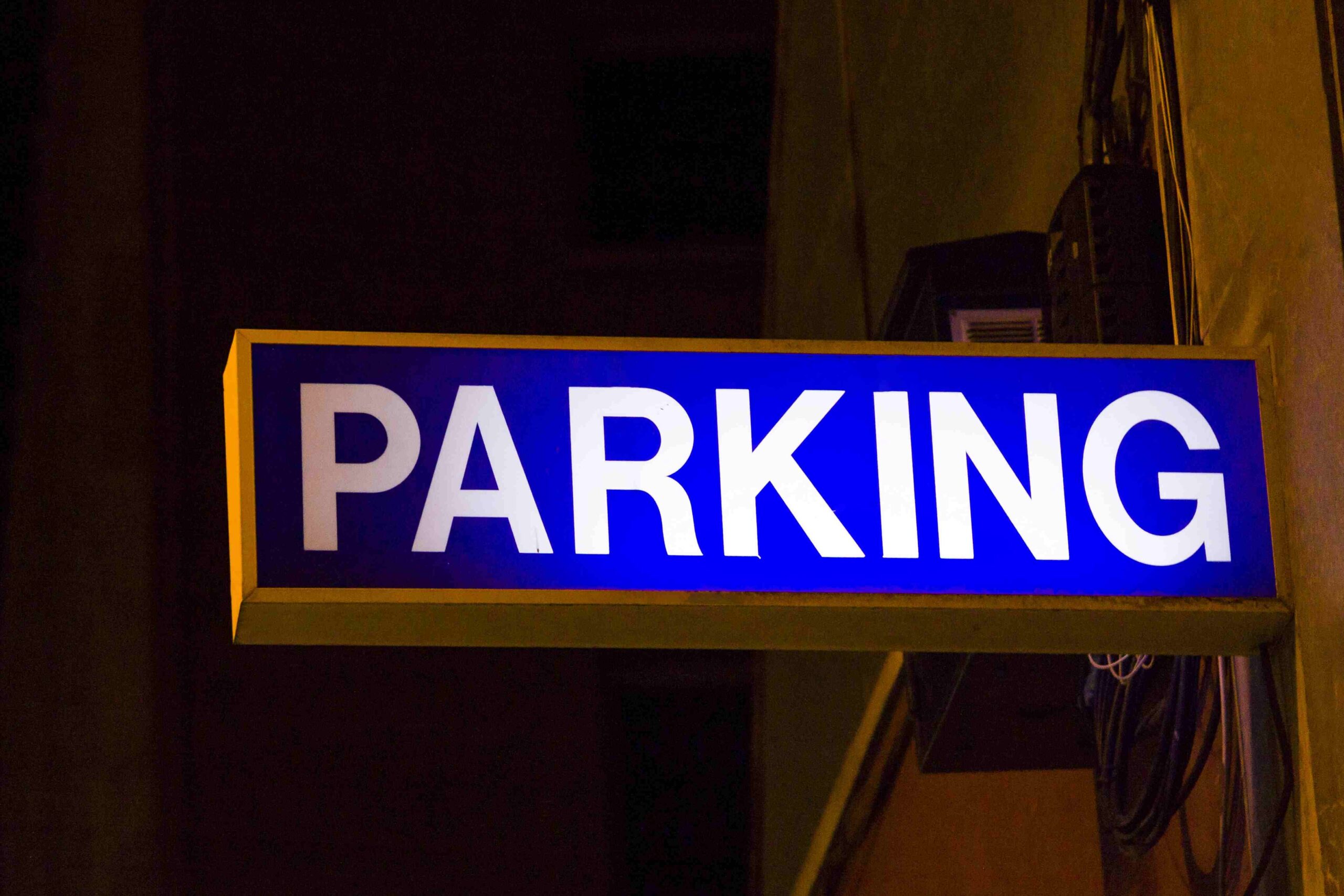
Electrical & Illumination Issues
Lightning signs require consistent power, working components, and visibility to function correctly.
- Flickering LED or Neon Lights – Loose wiring, power fluctuations, or damaged LED modules can cause intermittent lighting issues.
- Dim or Uneven Lighting – Dirt buildup, faulty bulbs, or power supply problems can reduce the brightness of backlit signs, making them hard to read at night.
- Power Failures in Digital & Backlit Signs – Burned-out transformers, circuit failures, or weather exposure can cause full sign outages.
- Overheating of LED Components – Poor ventilation and prolonged usage can lead to overheating, reducing LED lifespan.
- Battery Backup Failures in Exit Signs—Emergency exit and wayfinding signage must remain operational during power outages. Dead backup batteries violate safety regulations.
3. Environmental Factors Affecting Signage Longevity
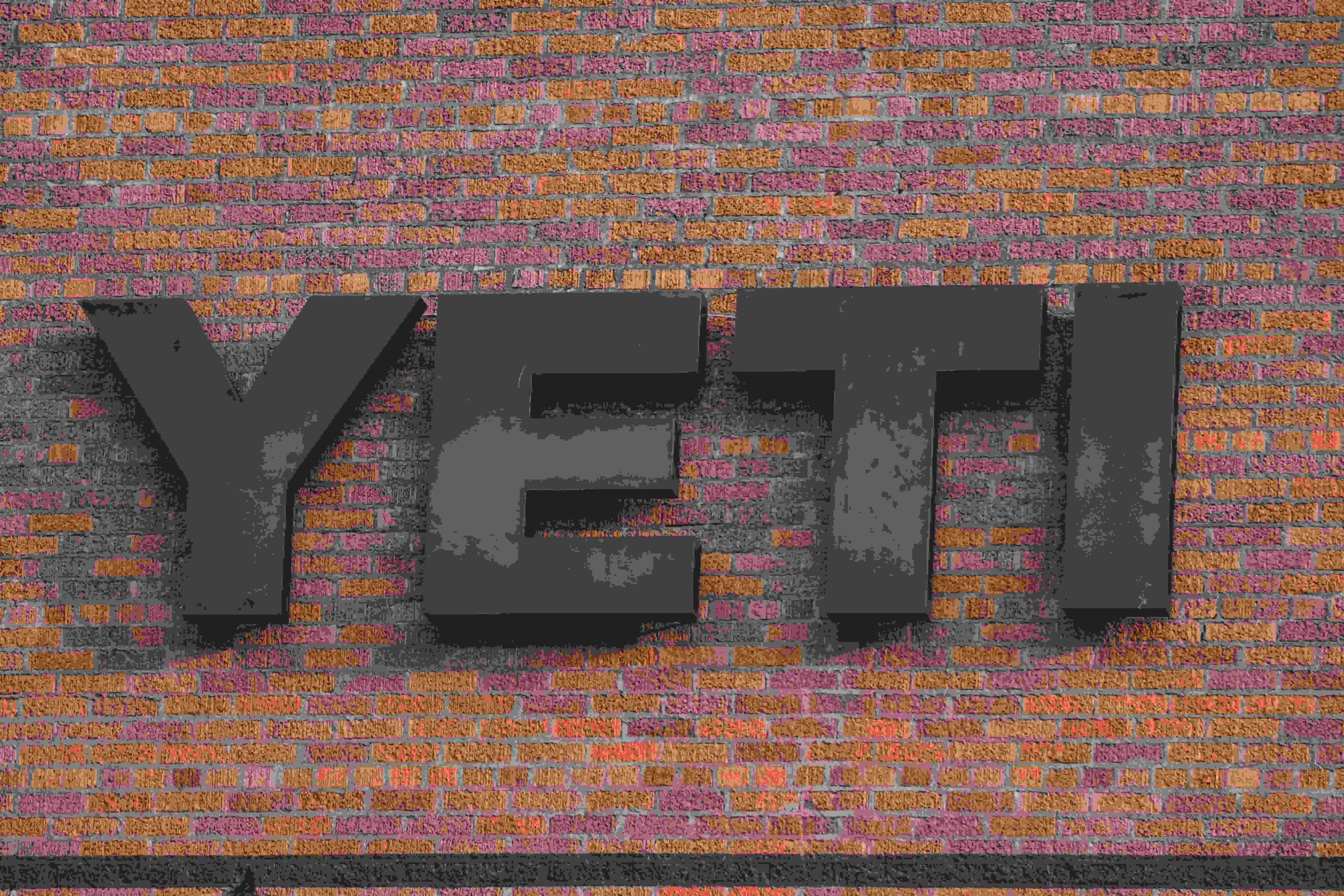
Environmental Factors Affecting Signage Longevity
Outdoor signs are constantly exposed to harsh environmental elements that accelerate wear and tear.
- Extreme Weather Conditions (Rain, Wind, Snow, Heat) – High winds can loosen mounting brackets, and heavy rain can cause water damage to digital displays.
- Coastal Humidity & Salt Exposure—Businesses near coastal areas experience faster corrosion of metal signage, leading to early deterioration.
- Bird and insect Damage—Birds often nest in large pylons or illuminated signage, while insects can damage electrical components or block visibility.
DIY Fixes for Common Signage Issues
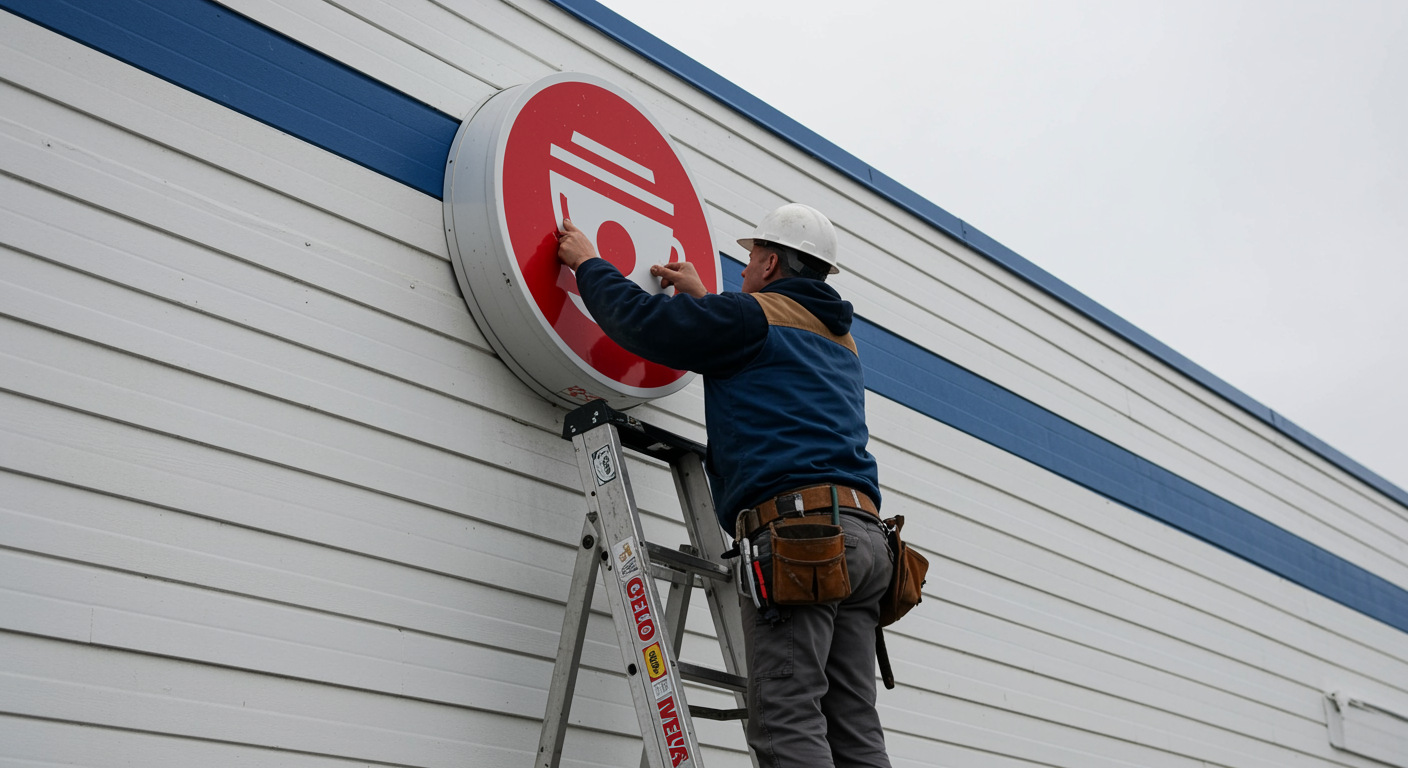
When to Call a Professional for Signage Repairs
1. Restoring Faded Colors & Preventing UV Damage
Over time, UV exposure causes fading, making your sign less visible and harder to read.
How to Fix:
- Clean signage regularly using a mild detergent and a soft cloth to remove dirt buildup.
- Apply UV-resistant protective coatings or anti-fade sprays to prevent further deterioration.
- Consider replacing vinyl graphics or repainting surfaces with UV-resistant ink for signs with severe fading.
2. Fixing Peeling Vinyl Graphics & Lettering
Vinyl graphics can peel or bubble due to moisture, poor installation, or age.
How to Fix:
- Use a heat gun or hairdryer to reattach peeling vinyl, softening the adhesive for better adhesion.
- Apply vinyl adhesive for minor fixes, but consider a full replacement if large sections are damaged.
- Ensure the surface is clean and dry before applying new vinyl graphics.
3. Repairing Scratches & Surface Damage
Scratches on acrylic, metal, or glass signage reduce legibility and aesthetic appeal.
How to Fix:
- Use a polishing compound to buff out minor scratches for acrylic or plastic signs.
- For metal signs, sand and repaint scratched areas with weather-resistant paint.
- Apply protective coatings to reduce the risk of future damage.
4. Treating Rust & Corrosion on Metal Signs
Rust forms quickly in high-humidity areas, damaging structural integrity and aesthetics.
How to Fix:
- Use a rust remover spray and wire brush to eliminate surface corrosion.
- Apply a corrosion-resistant coating or repaint the sign with weatherproof sealant.
- For severely rusted metal signs, consider replacement with aluminum or stainless steel signage for long-term durability.
5. Fixing Water Damage & Sealing Signage
Water damage affects wooden signs, digital screens, and neon signage.
How to Fix:
- Re-seal wooden signs with weatherproofing coatings to prevent moisture absorption.
- Inspect LED signs for water damage, ensuring all electrical connections remain dry.
- Install drainage holes in large outdoor signs to prevent water buildup.
6. Electrical Signage Fixes: Replacing LED Modules & Repairing Wiring
A failing LED module or loose wiring can result in dim, flickering, or non-functional lighting.
How to Fix:
- Replace burned-out LED modules or neon tubes for consistent illumination.
- Check power sources and circuit connections for loose wires or damage.
- Ensure electrical enclosures are sealed properly to prevent moisture infiltration.
Safety & Legal Considerations for Signage Repairs
While DIY signage maintenance can address minor issues, some repairs require strict safety measures and legal compliance. Mishandling electrical components, improper cleaning solutions, or failing to follow local regulations can lead to further damage, safety hazards, or code violations.
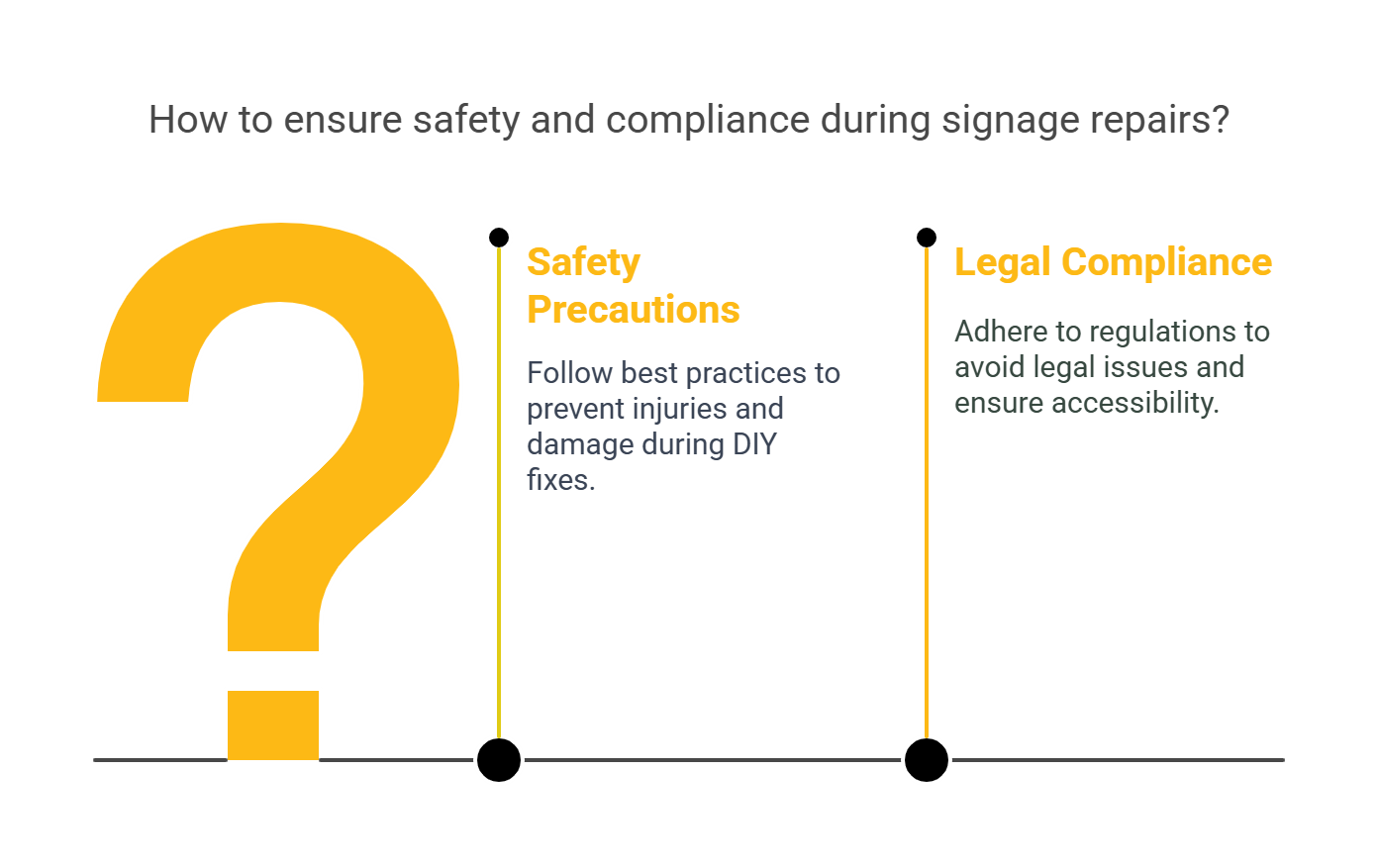
Safety & Legal Considerations for Signage Repairs – BlinkSigns Infographics
1. Safety Precautions for DIY Signage Repairs
When attempting DIY fixes, follow these best practices to prevent injuries and further damage:
- Turn off the Power Before Working on Electrical Signs. Always disconnect LED or neon signage from power sources before cleaning or repairing components.
- Use Ladders & Scaffolding Safely – For high-mounted signs, ensure ladders are secure and stable, or use professional scaffolding when necessary.
- Wear Protective Gear—Wear gloves, safety glasses, and protective clothing when handling glass, chemicals, or electrical wiring.
- Avoid Harsh Cleaning Chemicals – Strong solvents can damage vinyl graphics, acrylic surfaces, and painted finishes. Stick to mild detergents and non-abrasive solutions.
- Follow Manufacturer Guidelines – Consult the signage manufacturer’s maintenance manual before using any cleaning or repair tools.
2. Legal & Compliance Factors for Signage Maintenance
Signage regulations vary by location, industry, and sign type. Ensure all repairs and updates comply with local signage laws and building codes.
- ADA Compliance – Businesses must ensure that directional, safety, and wayfinding signage remains visible, readable, and accessible to all users, including those with disabilities.
- Electrical Safety Regulations – Faulty electrical signage must be professionally repaired to comply with the guidelines of OSHA and NEC (National Electrical Code).
- Permits for Large Signage Repairs – Some monument, pylon, or building-mounted signs require permits for modifications or replacements.
- Fire Safety Codes – Exit signs and emergency lighting must always be functional to meet fire department and building code regulations.
Failure to meet these regulations can result in fines, legal issues, or forced signage removal. If you’re unsure about compliance, BlinkSigns can assess your signage and ensure all repairs meet legal standards.
Preventative Maintenance Tips to Extend Signage Lifespan
Preventive maintenance reduces long-term costs, extends signage life, and preserves brand visibility. Implementing a regular maintenance schedule prevents early deterioration and emergency replacements.
Comprehensive Signage Maintenance Checklist
| Maintenance Task | Recommended Frequency | Best Practices |
| General Cleaning | Monthly | Use mild soap, warm water, and microfiber cloths. Avoid harsh chemicals. |
| Dust Removal | Weekly | Use soft brushes or compressed air for LED and digital signs. |
| Inspect Mounting & Fasteners | Every 3 Months | Check bolts, brackets, and frames for loosening or corrosion. |
| Check for Peeling Graphics | Every 2 Months | Reapply adhesive or replace faded vinyl sections. |
| Apply Protective Coatings | Every 6 Months | Use UV-resistant and waterproof coatings for outdoor signs. |
| Test Electrical Signage | Every 3 Months | Check LED brightness, wiring, and power supply. |
| Rust & Corrosion Prevention | Every 4 Months | Treat metal surfaces with anti-rust spray and protective coatings. |
| Check for Mold & Mildew in Humid Areas | Every 3 Months | Clean affected areas with mild disinfectants to prevent buildup. |
| Repaint or Touch Up Metal Signs | Annually | Use weather-resistant paint for restoration. |
A structured preventative maintenance plan ensures that signage remains functional, attractive, and legally compliant. If maintenance becomes overwhelming, BlinkSigns offers professional signage servicing tailored to your needs.
👉 Download our free Signage Maintenance Checklist to stay proactive and hassle-free!
Technology & Innovations in Signage Maintenance
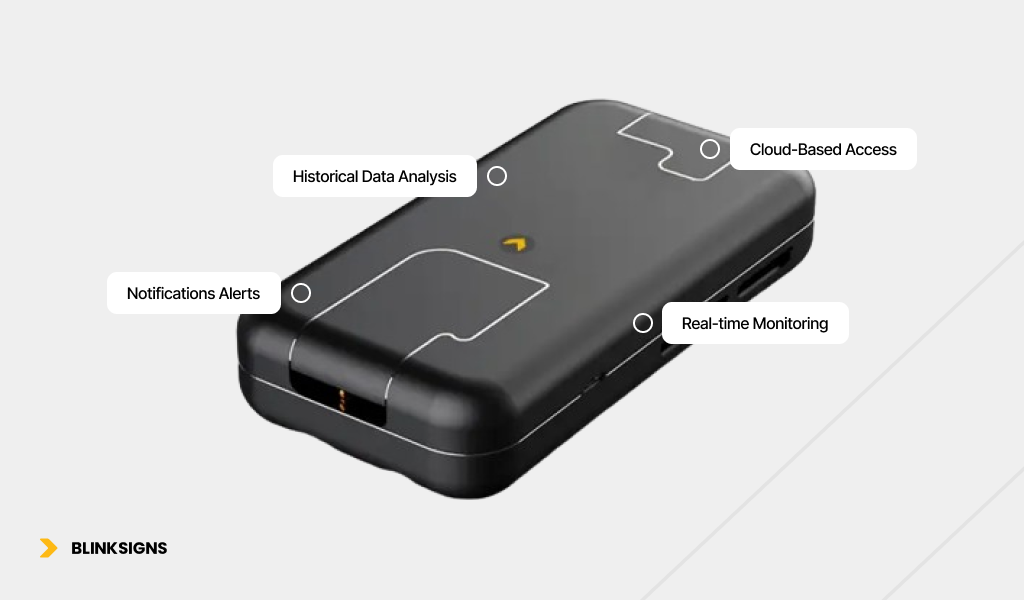
Signsense – A signage health monitoring device
Advancements in signage technology offer solutions that minimize maintenance needs and extend signage lifespan. Businesses investing in modern, durable signage can reduce repair costs and improve efficiency.
1. Smart Signage Monitoring & Automated Diagnostics
- Smart LED Signage: Integrated sensors track LED brightness, power usage, and connectivity issues, alerting businesses when maintenance is needed.
- Real-Time Monitoring for Digital Displays: Advanced software detects malfunctions and allows remote troubleshooting, reducing manual inspections.
- Illuminate Your Business with Sign Sense: Enter Sign Sense — a pioneering device designed to keep tabs on your signboard’s health. Installed discreetly inside your signage, it tracks light intensity and performance, feeding real-time data to your online dashboard.
2. Self-Cleaning & Weather-Resistant Coatings
- Dust-Repellent Coatings – Reduces accumulated grime on digital signage, improving visibility.
- Anti-Graffiti Films – Protects against vandalism damage, making cleaning spray paint or sticker residues easier.
3. LED Retrofitting for Energy-Efficient Signage
- Replacing Old Neon with LED Modules – Businesses upgrading neon signs to LED reduce energy consumption and maintenance frequency.
- Solar-Powered Signage – Reduces reliance on electrical grids, lowering operational costs.
Staying ahead with modern signage innovations ensures better longevity, less maintenance, and cost savings. BlinkSigns provides LED retrofitting, digital signage solutions, and smart monitoring services to help businesses stay ahead.
When to Call a Professional for Signage Repairs
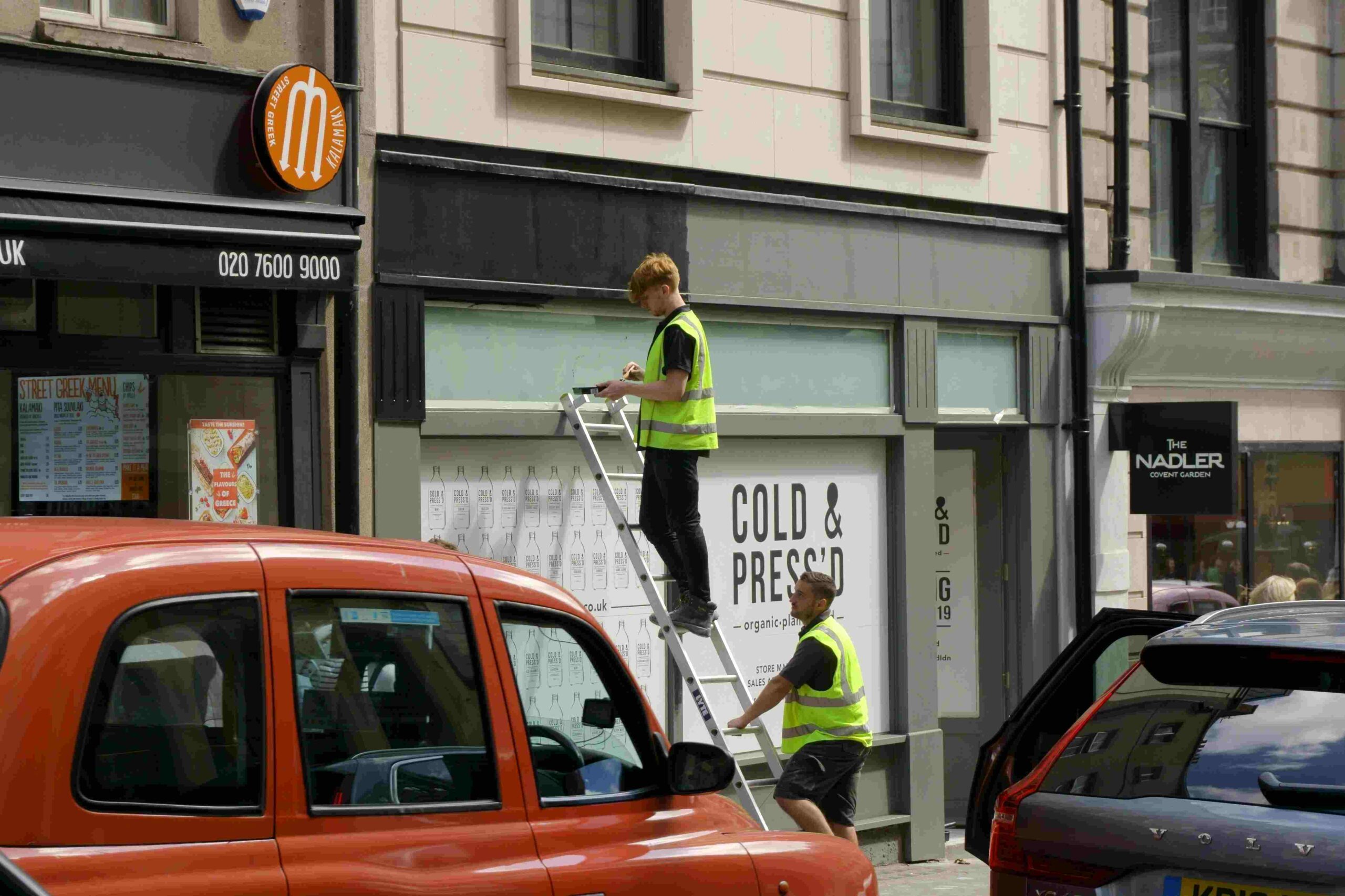
DIY Fixes for Common Signage Issues
While DIY maintenance works for minor signage issues, some problems require expert attention.
Signs That Require Professional Repair
- Severe Structural Damage – Cracks, bending, or detached signage pose safety risks.
- Major Electrical Failures – Faulty wiring, burned-out circuits, or power surges affecting illuminated signs.
- Large-Scale Vinyl Replacements – Extensive peeling or outdated branding requiring full reapplication.
- High-Mounted or Oversized Signs – Repairing pylon or monument signs requires specialized equipment and permits.
Why Choose BlinkSigns for Professional Signage Repair?
- Expert Signage Technicians – Specialists trained in LED, neon, vinyl, acrylic, metal, and digital signage repairs.
- Full-Service Signage Solutions – From routine maintenance to complete refurbishments, BlinkSigns ensures your signage remains functional and professional.
- Custom Preventative Maintenance Plans – Proactive servicing reduces repair costs and extends signage longevity.
If your business signage needs professional restoration, BlinkSigns delivers expert solutions with industry-leading quality.
Conclusion: Protect Your Investment with BlinkSigns
Signage maintenance is an investment in your brand’s reputation, customer experience, and long-term cost savings. A well-maintained sign boosts visibility, enhances brand perception, and prevents compliance issues.
While DIY solutions help with minor maintenance, major repairs require professional expertise. At BlinkSigns, we offer comprehensive signage services, from cleaning and refurbishing to full-scale maintenance and replacements.
Need professional signage maintenance? Contact BlinkSigns today for a free consultation.